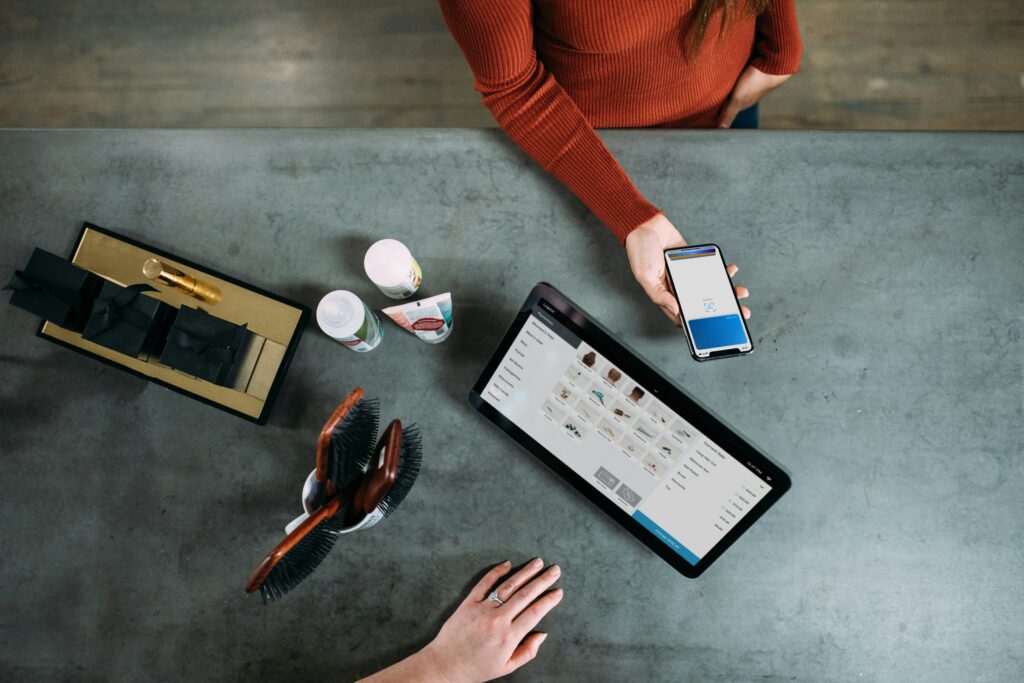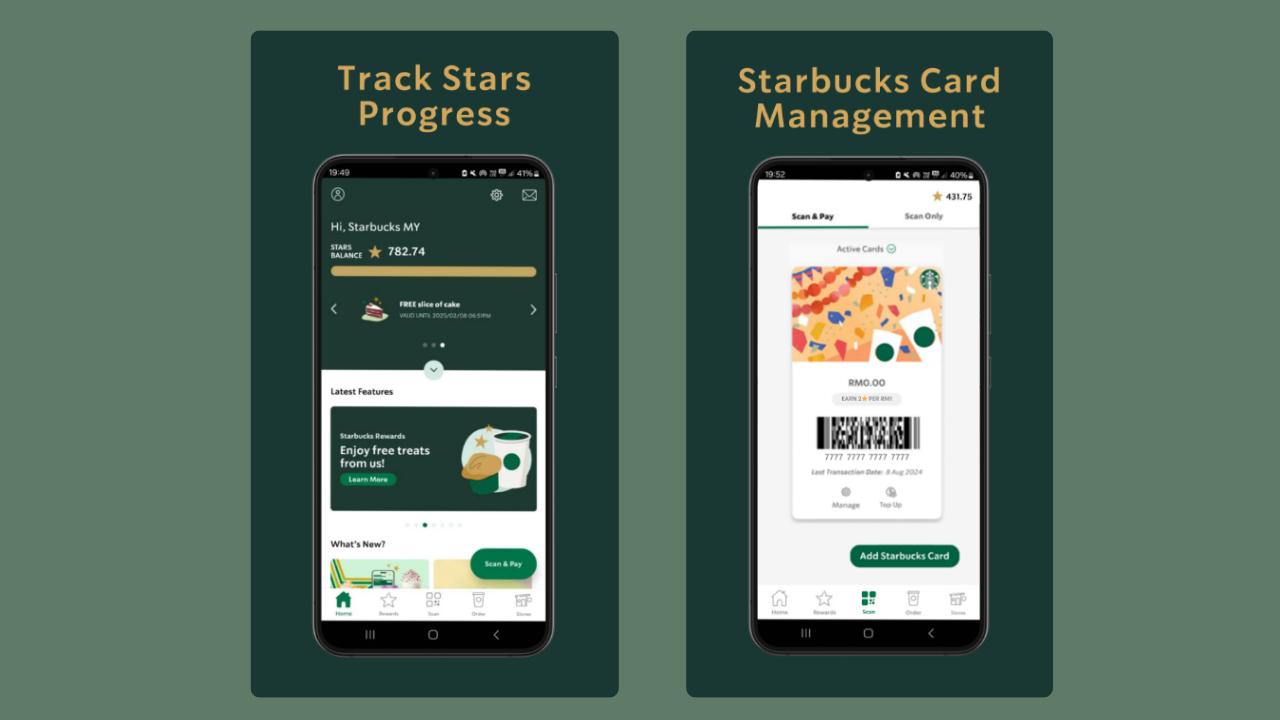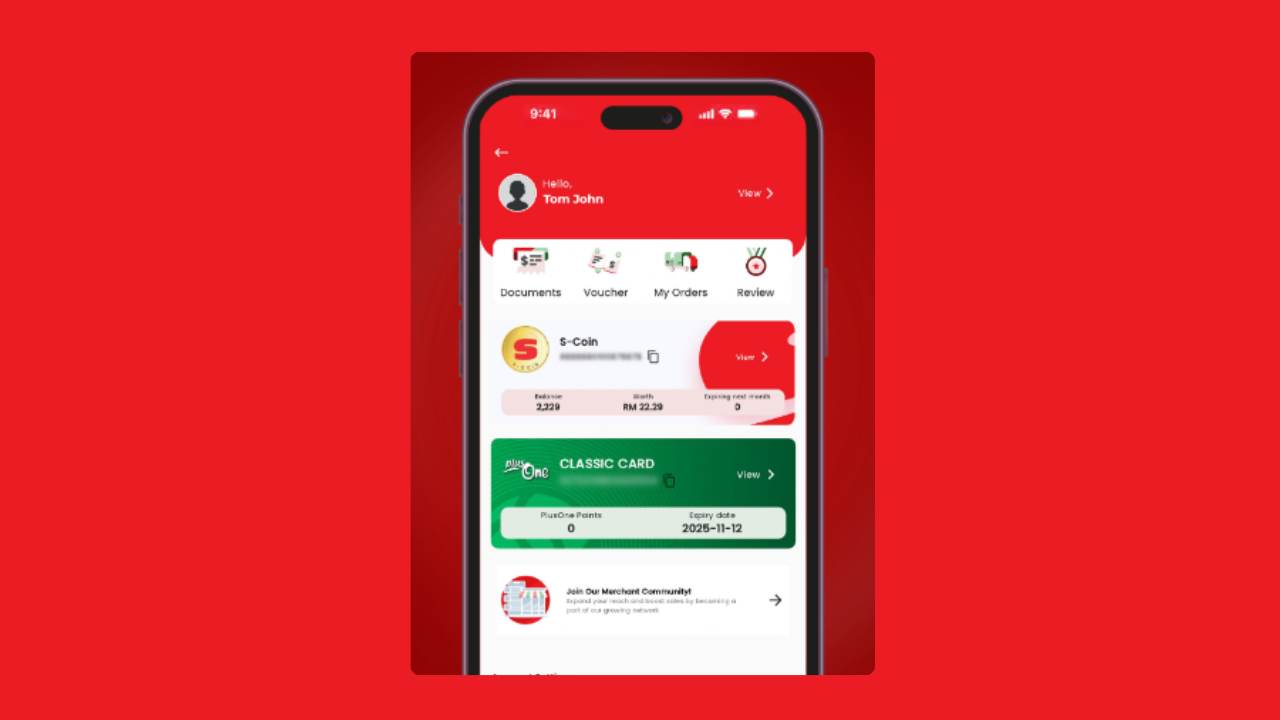Estimated Reading Time: 13 minutes

Are You Leaving Money on the Table Without Even Realizing It?
Did you know? According to the National Restaurant Association, 60% of loyalty program members prefer using a mobile app to access their programs rather than carrying physical cards. This signals a deep mobile preference that your business should tap into. Safe to say, if your loyalty program isn’t mobile-friendly, you might be leaving money on the table.
At the end of this article, you’ll learn why you should implement a digital loyalty card for your business. You’ll also discover a super simple way to launch one that your customers will actually want to use in just 10 minutes. No forms, cards, QR codes, or apps.
- Why Digital Loyalty Cards Boost Customer Retention
- Examples of Brands Using Digital Loyalty Cards
- Why Some Loyalty Cards Work Better Than Others
- Benefits of Digital Loyalty Cards
- Choosing the Right Loyalty Program Structure for Your Digital Loyalty Card
- Choosing The Right Loyalty Program Incentive for Your Loyalty Card
- How Customers Check Their Progress Digitally
- Digital Loyalty Card FAQs: What Businesses Ask Most
- Conclusion
Why Digital Loyalty Cards Boost Customer Retention
The ROI of Loyalty vs. Acquisition
It can cost you five to twenty-five times more to win a new customer than to keep an existing one. Five. Freaking. Times. Returning customers already know and like your business. They probably don’t need any more convincing, but just a good reason to come back. A loyalty program is that reason. In fact, studies show that repeat customers spend more, and loyal customers are cheaper to serve. And it gets even better: customers who actively engage with loyalty programs spend twice as much as casual shoppers.
One of our employees noted that they used to visit McDonald’s only once every couple of months, but after signing up for the app and collecting points, they now go almost every week. So, if you’re spending all your time and budget chasing new customers but ignoring the ones who already walk through your doors, you might be leaving money (and long-term growth) on the table.
A smart, well-integrated loyalty program is one of the best customer retention tools to make your best customers stick around and spend more.
Modern Tools That Make It Easy (and the Hidden Pitfalls They Help You Avoid)
Running a customer loyalty program sounds great…until you start thinking about all the logistics. Cards to print, points to track, and systems that don’t even talk to each other. But here’s the good news: modern digital loyalty programs like digital loyalty cards take all that mess and make it simple.
Platforms like SimpleLoyalty are built to work seamlessly with how people already shop on their phones. That means your customers can collect points automatically, without needing to scan QR codes, fill out forms, or download yet another app.
But apart from handing out points, they also help you:
- Track customer behavior (how often they visit or what they redeem)
- Send automated rewards or reminders
- Run referral programs that actually work
The most important thing is they help you avoid the stuff that kills loyalty programs.
For example:
- Poor data integration: When your POS (point of sale) doesn’t sync with your CRM (customer relationship management) or any other third-party software, it creates messy data. And that mess has cost businesses up to $12.9 million a year in lost revenue.
- Complicated reward systems: If earning or redeeming points feel too difficult or cumbersome, roughly two in three customers will give up and change to a different brand.
So yes, tech can solve a lot. But only if it’s done right. If you’re a restaurant/cafe owner yourself planning to switch to a digital loyalty card, check out our Switch to Digital Restaurant Loyalty Card article. It further explains the benefits and how it works in a real-world setting.
Examples of Brands Using Digital Loyalty Cards
Let’s look at some real-life brands that crushed it.
Starbucks
Over 57% of their U.S. sales now come from rewards members. And those members spend two or three times more than non-members. It’s all handled through the app, where users can order ahead, collect stars, and unlock perks. Simple. Sticky. Effective.
In the Starbucks app, customers can track their points and convert their physical Starbucks card into a digital version. They can then scan and pay at the counter, just like they would with the physical card, but faster and more convenient.

Starbucks app (Image retrieved from Google Play Store)
Senheng
Senheng is a Malaysian electronics retailer. They offer a paid loyalty program called PlusOne. It provides members with extra benefits such as:
- An additional one-year warranty on top of the manufacturer’s warranty
- S-Coin cashback on purchases, which can be redeemed for discounts on future purchases
- Special promotions, invitations to events, and discounts on services
- A service contract that covers repairs for defects on certain products
In the Senheng app, it will display a digital loyalty card based on your subscription tier. For example, PlusOne Basic, PlusOne Classic, and PlusOne Lazada.

Senheng app (Image retrieved from Google Play Store)
As of 31 December 2023, Senheng has over 4 million PlusOne members. In the financial year of 2023, loyalty members contributed 94% of revenue. This highlights the importance of loyalty programs.
Why Some Loyalty Cards Work Better Than Others
Not all loyalty cards are created equal, and there’s real science behind why some keep customers coming back while others collect dust in a wallet. Let’s talk about one of the most eye-opening studies in customer psychology: The Endowed Progress Effect: How Artificial Advancement Increases Effort.
The Setup
300 car wash customers get handed loyalty cards.
Half of them (the endowed progress group) are given a card that says, “Buy 10 washes, Get 1 free” with two stamps already on it (20% progress). They are told these were part of a special promotion. The other half (the control group) were told, “Buy 8 washes, Get the 9th free” with no stamps (0% progress).
So in both cases, the customer needs to buy a total of 8 washes. The only difference is that one group has a head start.
The Results
- The endowed progress group with two pre-stamped cards had a 34% completion rate, way higher than the 19% in the control group.
- On average, they returned 2.9 days sooner between visits than the control group. And the closer they got to the reward, the faster they moved.
This is because of something called the Endowed Progress Effect. When people feel like they’ve already started a goal — even artificially — they’re more motivated to finish it. And that motivation grows the closer they get (a.k.a. the Goal Gradient Effect).
It’s all a simple trick of the brain: “I’m already making progress. Might as well keep going.”
What This Means for You
If your loyalty card makes customers feel like they’re starting from scratch every time, you might be missing out on a powerful behavioral nudge. The Endowed Progress Effect can literally double engagement and speed up return visits.
And going digital makes it even easier to apply these psychological cues without printing a single stamp.
Let’s look at why SimpleLoyalty’s digital loyalty cards make all of this even easier to pull off.
Benefits of Digital Loyalty Cards
Running a business is already full of moving parts. You’re juggling staff, stock, customers, and a hundred tiny things that have to get done. A traditional loyalty card system is just one more headache to manage. And those cards get lost, forgotten, or tossed in the wash. You won’t have access to real-time data too. That’s where digital loyalty cards shine because they actually make your life easier.
Here’s how:
1. No More Guesswork: With a digital system, you can actually see what’s working. You’ll know how often customers come in, what they redeem, and which promotions get results. No more relying on gut feelings. Clear insights can help you make smarter decisions and stop wasting money on stuff that doesn’t work.
2. It Runs Itself (Almost): Imagine rewarding loyal customers without needing to punch a card or do mental math at the register. Digital platforms handle that automatically. From sending out “We miss you!” reminders to tracking referrals, the system does the heavy lifting while you just focus on running your business.
3. Built for How People Actually Shop: Nearly three in four consumers are more likely to join loyalty programs if points and rewards are automatically updated and visible on their digital loyalty cards. A digital loyalty card sticks with them wherever they go. No bulky wallet card. No need to remember anything. Just open, tap, and go. They’ll appreciate the convenience.
4. Lower Costs, Less Waste: No printing. No reordering. No stacks of unused cards collecting dust. Digital loyalty programs are not just eco-friendly, they’re way more affordable in the long run.
5. Better Customer Retention = More Sales: The more connected your customers feel to your business, the more likely they are to return. A digital loyalty card helps you stay at the top of their mind through gentle nudges like push notifications or reminders for a reward waiting to be redeemed. These little touches keep your business on their minds and your competitors out of sight.
To recap, digital loyalty cards outperform traditional systems because of their:
- Accessibility
- Customers always have them on hand. No need to carry a physical card or remember where it went. Just tap and go.
- Convenience
- Rewards and points update automatically, so there’s no punching cards or doing math at checkout. Everything runs in the background.
- Engagement
- Built-in features like reminders and reward nudges keep your brand top of mind and boost return visits without being pushy.
- Data collection
- You get real-time insights into what your customers are doing (how often they visit, what they redeem, and which promos work).
- Cost-effectiveness
- No more printing costs or wasted cards. Digital cards cut waste and save money long-term.
- Smart features
- From automated messages to referral tracking, the system handles the heavy lifting while you focus on running your business.
These are the key pillars that make digital loyalty cards outperform traditional systems in 2026.
Choosing the Right Loyalty Program Structure for Your Digital Loyalty Card
There are 5 types of loyalty programs.
- Point-based
- Customers earn points from purchases. When they reach a certain number of points, they can trade them for a free product or discounts.
- Tiered
- Tiers divide customers into usually 3 or more groups. The first one is the basic or free tier. The second is a silver tier. The top tier is for the biggest spenders.
- Paid or premium
- This works like a subscription. Customers pay a membership fee to unlock special perks. In fact, 62% of customers in paid loyalty programs were more likely to spend more than those in a free plan.
- Coalition or partnership
- This is an opportunity to team up with other brands, share customer bases, and promote each other’s services or products.
- Referral based
- Reward your customers for bringing in new customers.
- Hybrid
- This is a mix-and-match approach. For instance, tiers in a point-based system.
Even with all these different types of loyalty programs, the most effective ones stick to the same three core principles known as the three R’s: Rewards, relevance, and recognition.
- Rewards: Give your customers the incentives they actually want.
- Relevance: Different offers attract different customers. Make sure the offers are tailored to the type of customers you would want to attract.
- Recognition: When customers feel seen and appreciated, they’re more likely to come back and spend even more.
Selecting the right loyalty program begins with these three R’s. Then, it requires careful consideration of the following:
- Define your business goals
- Understand your customer base
- Evaluate each type of loyalty program structure
- Consider the structure’s flexibility
- Budget your rewards
Check out our Best Type of Loyalty Program Structures 2025 article for a more detailed guide.
Choosing The Right Loyalty Program Incentive for Your Loyalty Card
There are numerous rewards for your loyalty programs, such as:
- Buy X, Get 1 Free
- Free shipping
- Cashback
- Early access
- Double points on the Xth visit and many more
What’s more important is choosing the right ones tailored to your customers. Here’s how.
- Know your customers: If you run a restaurant, consider visit-based rewards for your regulars. For occasional diners, a point system might be better at encouraging return visits. If you’re a retailer, consider a tier-based program to encourage purchases.
- Understand your margins: If you’re working with tight margins, avoid offering expensive rewards that could eat into your bottom line.
- Ensure it fits your operations: Your loyalty program should flow smoothly with how your business already runs. Pick a system that makes tracking, redemptions, and promos easy, so you can focus on delivering excellent service.
- Learn from customer insights: A good loyalty program gives you a window into what your customers love, like their spending patterns or favorite items. Use that info to create rewards they’ll actually care about.
- Find the right balance between value and cost: Choose perks that feel special or tailored to each customer. Always keep an eye on the ROI (return on investment). You want the program to benefit your business too.
- Test and tweak: Launch it, see how it performs, and be ready to make changes. Pay attention to what works (and what doesn’t) so you can fine-tune your program for better results.
How Customers Check Their Progress Digitally
With digital loyalty cards, customers can easily track how close they are to their next reward. On SimpleLoyalty, this is done by entering their phone number and verifying it with a one-time SMS card, either at checkout or through your loyalty page.
The card updates in real time and shows:
- Stamps or points collected
- Progress toward the next reward
- What has been or can be redeemed
Customers can access their card anytime by repeating this quick SMS verification. This visibility helps encourage return visits by making progress clear and easy to follow.
Digital Loyalty Card FAQs: What Businesses Ask Most
What is a digital loyalty card?
A digital loyalty card is a mobile-first version of traditional punch or reward cards. Instead of carrying a physical card, customers use an app or wallet (like Apple Wallet or Google Wallet) to earn and redeem points or rewards. It’s fully integrated with the business’s POS or loyalty platform, making tracking and engagement seamless.
However, we at SimpleLoyalty can help you create one that works without the need for an app!
What is the point of a digital card?
Digital cards streamline the loyalty experience for both you and your customers. They eliminate plastic waste, automate tracking, and reduce checkout friction.
More importantly, they give your business real-time data on customer habits and preferences, allowing you to tailor rewards and communications. That data then helps you drive repeat visits, upsells, and even targeted promos based on actual shopping behavior.
What are the disadvantages of a digital loyalty card?
- Privacy concerns
- Collecting personal information or purchase history risks turning off privacy-conscious customers—especially if your system isn’t fully secure or transparent.
- Fraud risks
- Like all digital assets, loyalty cards can be targeted by fraudsters creating fake accounts, transferring or stealing points, or abusing redemptions.
- Tech investment and upkeep
- You’ll need to invest in tech, integration, and ongoing support. Without a dedicated team, your program may lag or underperform.
Is a digital card safe?
Absolutely. Digital loyalty cards are generally safe, especially when backed by secure systems. It’s important to choose a provider that prioritizes data protection and customer privacy at every level.
Key safety features to look for include:
- Encrypted storage of loyalty data
- No sensitive customer information is shared or sold
- Customer logins are verified via one-time SMS codes (no links or passwords required)
- Compliance with relevant data protection and privacy laws in your region, with regular security checks.
When implemented properly, digital loyalty cards offer a secure and reliable experience for both your business and your customers.
Conclusion
At the end of the day, building customer loyalty shouldn’t feel like another full-time job. With the right digital tools, you can launch a loyalty program that’s simple, smart, and actually gets results — all without forms, cards, QR codes, or clunky apps.
You don’t need to be a tech wizard. You don’t need a big budget. And you definitely don’t need to keep printing those punch cards. All you need is a system that works for you 24/7 to reward your regulars and bring back the almost-forgotten. So, if you’ve been thinking about stepping up your customer loyalty game, now’s the time.
Build your loyalty card today with SimpleLoyalty, it only takes 10 minutes. Plus, it’s free!


